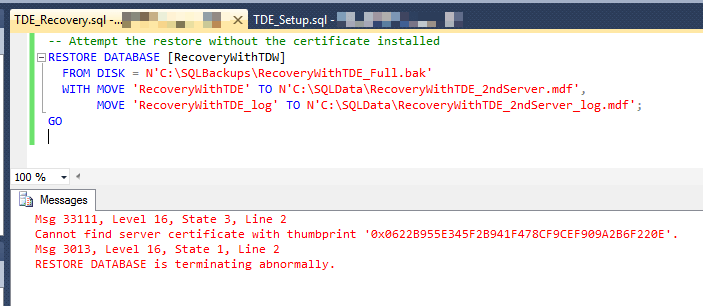

- DATABASE ENCRYPTION IN SQL SERVER 2012 ENTERPRISE EDITION INSTALL
- DATABASE ENCRYPTION IN SQL SERVER 2012 ENTERPRISE EDITION UPGRADE
Modernize Cassandra data clusters with a managed instance in the cloudĭeploy applications to the cloud with enterprise-ready, fully managed community MariaDBĬonnect assets or environments, discover insights, and drive informed actions to transform your businessĬonnect, monitor, and manage billions of IoT assets Simplify on-premises database migration to the cloudĪzure Managed Instance for Apache Cassandra Migrate SQL Server workloads to the cloud at lower total cost of ownership (TCO)Īccelerate apps with high-throughput, low-latency data caching Managed, always up-to-date SQL instance in the cloud Modern SQL family for migration and app modernizationīuild or modernize scalable, high-performance appsįully managed, intelligent, and scalable PostgreSQL Yeah, I am old now.Support rapid growth and innovate faster with secure, enterprise-grade, and fully managed database services Someone said that this is old trick and used in Sybase as well.
Verify that databases are online and healthy again with new Edition!. Now we need to Start SQL Service again. We also need to replace the system database files with the previous one. Move all databases files back to their original locations. Take backup of current files to make sure we can revert to this state. Since we want to reuse databases, we need to apply SQL Server Patches so that the version matches with what we had earlier. DATABASE ENCRYPTION IN SQL SERVER 2012 ENTERPRISE EDITION INSTALL
Now, install New SQL Server Server instance having SAME name and SAME path as of earlier instance.You should take a screenshot of the “Select Features” screen while uninstalling so that you could be certain to install the correct features when installing again in later steps. Now we can safely uninstall SQL Server.

We need to copy all mdf, ldf and ndf files for system and user databases.
DATABASE ENCRYPTION IN SQL SERVER 2012 ENTERPRISE EDITION UPGRADE
This is needed because we have to upgrade the newly installed SQL instance to the exact same build later.
Run SELECT and make a note of exact version and build number (like – which is SQL 2012 + SP1). If there are no rows returned in any database then we are good to move next. In my friend’s case he was using compression but it works in developer edition as well so there was no need to remove that. If there is any such feature which is not supported on destination editions then we should remove it otherwise database would not come online after last step. Above DMV will tell us if the database is utilizing any of the “Enterprise only” features (like Partitioning, Compression etc.). We need to run the following query on each database. Use SQL Server Management Studio and connect to SQL. Open Reporting Service Configuration Manager and take a backup the encryption keys. The trick would work only if the paths are not changed. Make a note of location of various component (system databases, shared components) in operating system. Standard disclaimer applied on this blog post.īefore attempting the steps we should take backup of ALL databases (system and user). I am just writing them down so that it would help someone in future. It is well known and tested by many earlier. I must confess that I am not the inventor of this “downgrade trick”. Note that Developer and Enterprise are exactly the same so my friend was little safe. If you are using features which are not supported in edition where we want to downgrade (like enterprise to standard) then it’s tricky as we have to remove those features first. We are calling it as “downgrade” because its not listed as supported upgrade on books online. Well, upgrading edition of SQL Server is easy (my earlier blog) and downgrade is not “so” easy. In short, he wanted to change his edition from enterprise to developer with no data loss. Since he has done a lot of work in this database and wanted to make sure his data is not lost, he called me for advice. His end goal was to use developer edition but “someone” installed enterprise. My dear friend called and told that he has enterprise edition Installed on his laptop and it was “accidental" install. 
Anyways, as usual, another friend, another interesting question and another blog topic.

If you are regular reader of my blog, you would understand what kind of friends I have. Life is beautiful when you have good friend around you.








 0 kommentar(er)
0 kommentar(er)
